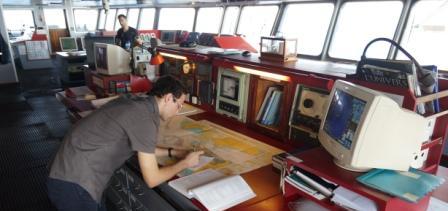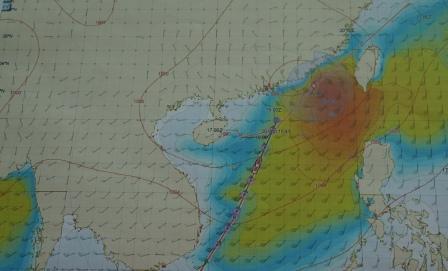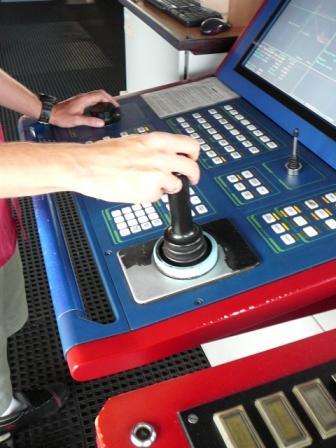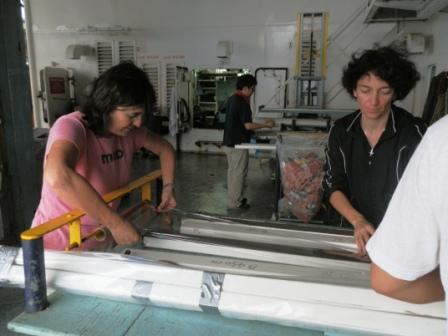Since last week, GeoLog has had the pleasure to host reports from Teachers at Sea. This educational programme, co-sponsored by the European Geosciences Union (EGU) and the French Polar Insitute (IPEV), gives school teachers the opportunity to take part in oceanographic cruises with scientists. This year, Sandrine Vivier and Ana Sánchez, teachers of Biology and Geology in Rodez (France) and Madrid (Spain), respectively, together with EGU’s Education Chair Carlo Laj, join scientists on board of the Marion Dufresne. The research vessel is navigating the South China Sea where teachers will work alongside scientists in collecting marine sediments to retrieve the secrets of deep ocean circulation and understand past variations of the Asian Monsoon.
Report 5: At the controls of a research vessel
The ‘brain’ of the Marion Dufresne, always alert during the oceanographic cruises, is located at the bridge – the room from where the vessel is commanded.
To navigate the oceans of the world, the Marion Dufresne uses three shipboard GPS satellite systems, as well as nautical charts. Weather reports and charts obtained daily from Bon Voyages Systems, a private company, are also used for navigation. We were a little worried in the first few days when, looking at the most recent weather chart, we realized that a rather severe tropical storm was sitting on the area where our coring sites were located! Luckily for us, the storm moved away from the zone and so far we have found only calm waters.
Captain Bernard Lassiette and his officers showed us the different instruments present at the bridge of the vessel. We were first struck by the two radar screens, right in the centre, which operate at two different wavelengths, 3 cm and 10 cm. The one operating at the shortest wavelength yields very precise images but is sensitive to atmospheric phenomena such as rain, while the other one provides less precise images but is much less sensitive to these kind of atmospheric perturbations. Both detect other vessels or the coast at a distance of about 50 km. Also in the centre is the rudder, which can be computer controlled or hand manoeuvred.
On the port (left) side, there are two panels similar to those we saw in the machinery control room a few days ago. The commands originate from here and are reproduced in the ‘heart’ of the Marion Dufresne four decks below.
But the most spectacular feature in the bridge is the control station – the real ‘brain’ of the ship – on the starboard (right) side. This station is particularly important during the long coring sessions, when the Marion Dufresne cannot move by more than two or three meters during the entire operation. To keep the vessel in the same position, it is important to take wind and surface current into account. The ‘brain’ does this (up to rather bad sea and weather conditions) and automatically controls the two propellers and the thruster to keep the Marion Dufresne stable. At times, however, man replaces the machine: the ship officers can control the boat manually using a ‘joy stick’.
As for the ongoing coring operations, we obtained three new cores (35, 49 and 52 meters long) with Casq and Calypso since our last report! The activities in the Marion Dufresne don’t stop: the team continues to work, preparing, labeling, and storing the cores. At the same time the scientists study the main characteristics of the samples: color, density, magnetism, foraminifers, and so on.
There is much to discover on board of the vessel!
By Sandrine Vivier, Ana Sánchez, and Carlo Laj





